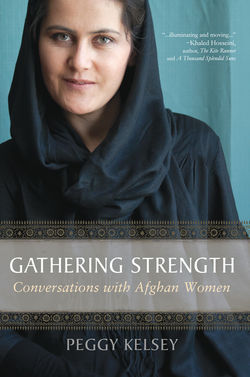Читать книгу Gathering Strength: - Peggy Kelsey - Страница 23
На сайте Литреса книга снята с продажи.
Оглавление2/Islam
In its history and prehistory, Afghanistan has been home to various religions. Zoroaster is credited with establishing the world’s first monotheistic religion. Buddhists came as early as the sixth century BCE, and lived throughout the country. Hindus, Jains, and Jews were already part of the demography when Alexander the Great arrived in 330 BCE. He and his entourage introduced pagan Greek beliefs, but the Greeks and Macedonians coexisted with the locals and sometimes adopted their religions. In the first few centuries of the Common Era, Christianity entered the mix. Sufism developed between the twelfth and fourteenth centuries. As noted earlier, Arab Sunni Muslims conquered Herat between 642 and 683 CE and gained control over the rest of Afghanistan by 870. The Safavid Empire that ruled Iran and western Afghanistan officially adopted the Shia version of Islam in the sixteenth century. According to the Pew Research Center,1 the Shia presently constitute 10-20 percent of the Afghan population and are mostly, but not only, ethnic Hazaras.
During the years of Muslim expansion, newly conquered peoples were given the choice to subject themselves to the new empire or die; once they accepted the authority of their new rulers, they were given the choice to convert to Islam or not as they wished. Those choosing not to convert had to pay a "protective tax"2 and were excluded from military draft. Those who did convert were ordered to pay a "Muslim tax" and were subject to compulsory military service. There were benefits and risks associated with conversion, but it wasn’t mandatory.3
One result of this rich and complex religious past is that historically, Afghans were very tolerant of different faiths and of variations within Islam. This acceptance faded with the introduction of the communist regimes, leading up to the 1979 Soviet invasion. In general, during any political, economic or social unrest, populations become more rigid and uncompromising in their beliefs. Additionally, the tactic of pitting one group against another was practiced during all of the Afghan wars.
Today, Afghanistan’s official name is the Islamic Republic of Afghanistan. It is a crime for an Afghan to profess or convert to a religion other than Islam. Media portrayal of fundamentalist extremist beliefs and those of the Taliban lead outsiders to believe that all Afghans, or at least all Afghan men, hold similar views. In reality, many Afghan men want their wives and daughters to be educated and to participate in society. Much of the dogma espoused by those opposing these ideals is based on Pashtunwali, the traditional "code of honor" of the Pashtun people, and other very patriarchal traditions, rather than on the actual tenets of Islam. As with any religious text, there are liberal and conservative interpretations of what is written in the Quran.
The majority view in the West is that Islam subjugates women. However, the Afghan women I met stated the opposite: that Islam gives them their rights. Historically this is true, since Islam was the first monotheistic religion to give women property and inheritance rights. While their percentages of property and inheritance seem disproportionately small to modern Western eyes, those rights were given in the context of a traditional society where no one lived independently. Before Afghan society’s fabric was rent by war, both women and men had their own roles, rights, and responsibilities; everyone had a place.
The women in this chapter tell of their experiences with Islam and their beliefs about it. Rather than wishing they were not subject to Islam, they wish that all Afghans would practice it.
Several women in this chapter are introduced more fully in later chapters; others appear only here. Because most of their remarks are brief, I’ve omitted introductions except for Hajai Gulalai.
